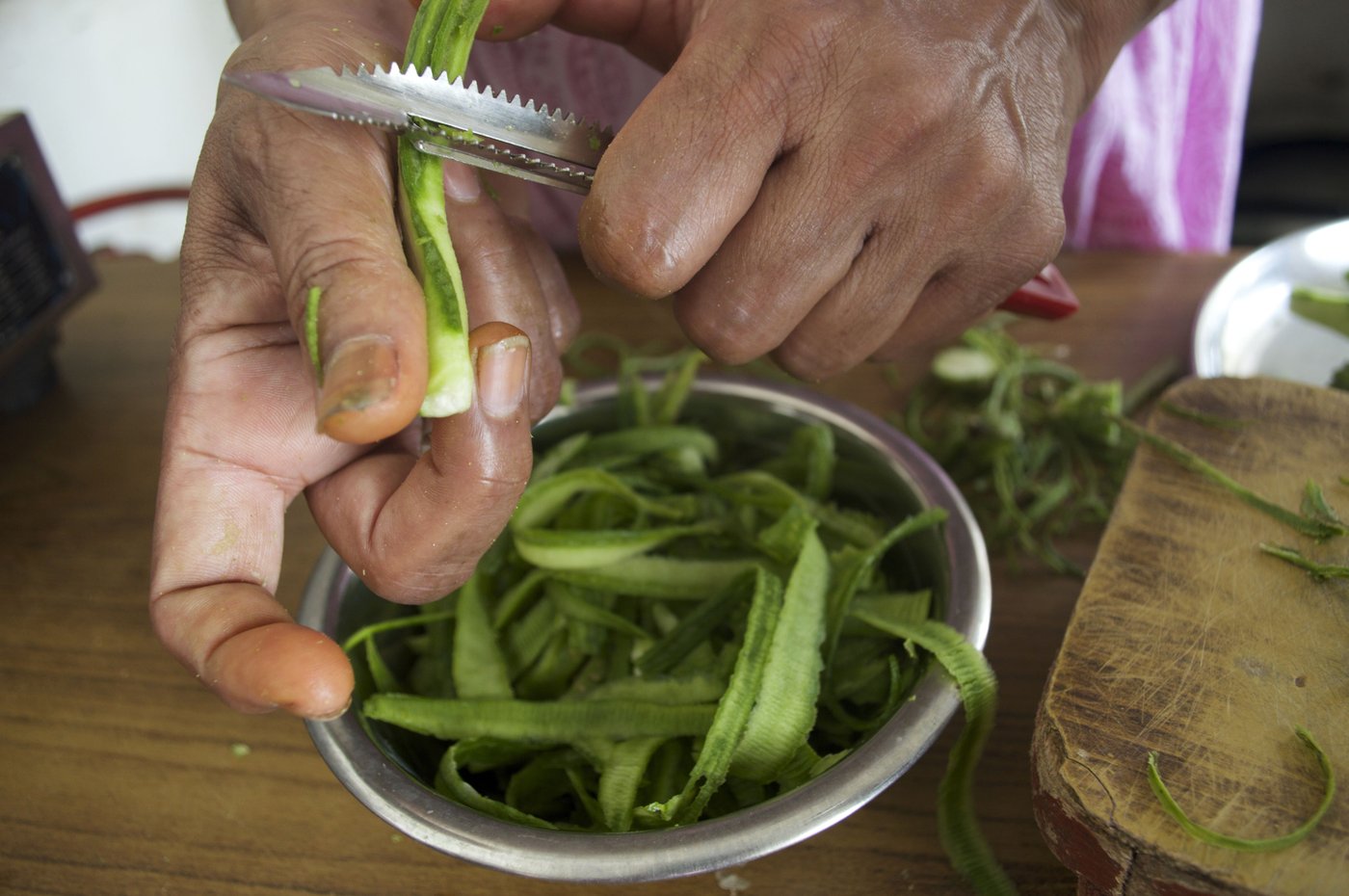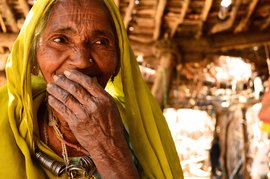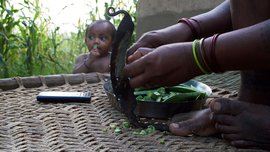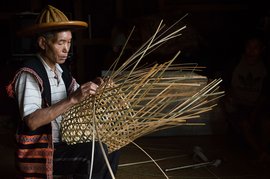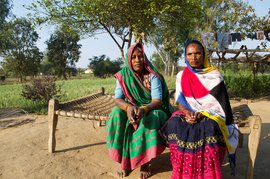She arrived in the kitchen with bags of fresh vegetables and fruit. When she left, there wasn’t an ounce of waste. Vijaylakshmi Samar uses the whole fruit or vegetable in her cooking. She even throws the peels into the pot. Unusual?
In Udaipur, Rajasthan, there is a tradition of using peels, seeds, pits and even watermelon rinds to make dishes ranging from
subzi
(cooked vegetable) to fried snacks. The peels and pits have medicinal uses as well. For example, the kernel of a mango seed can help cure stomach cramps and period pains.
Elders in Udaipur tell us that in the old days no part of a vegetable was wasted. Anything not used in the kitchen for human consumption became animal feed or was composted in the fields. There is no traditional name for this process. The older generation tell us they simply didn’t have the luxury of wasting anything.
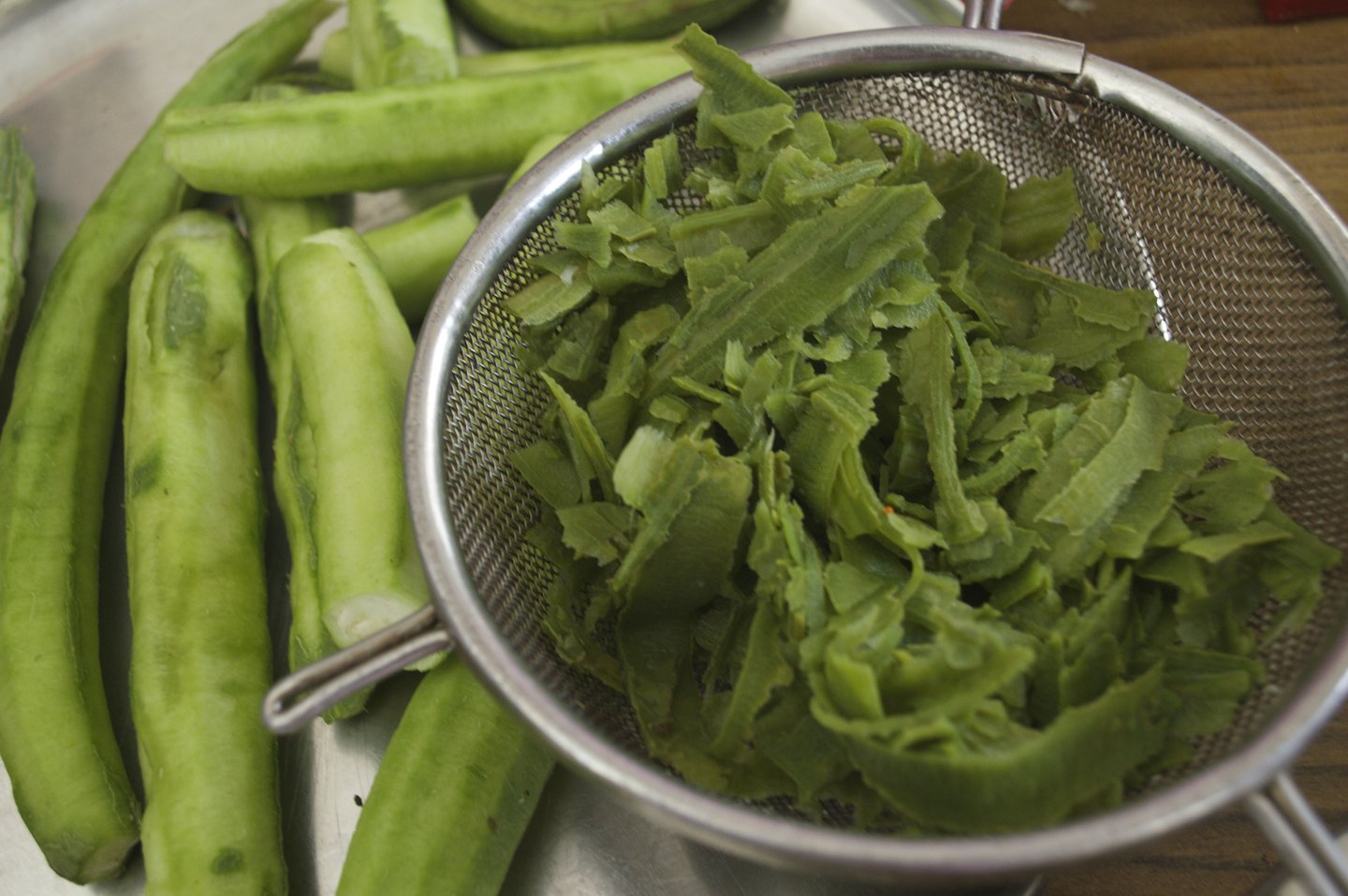
Bright green ridge gourd peels ready for use
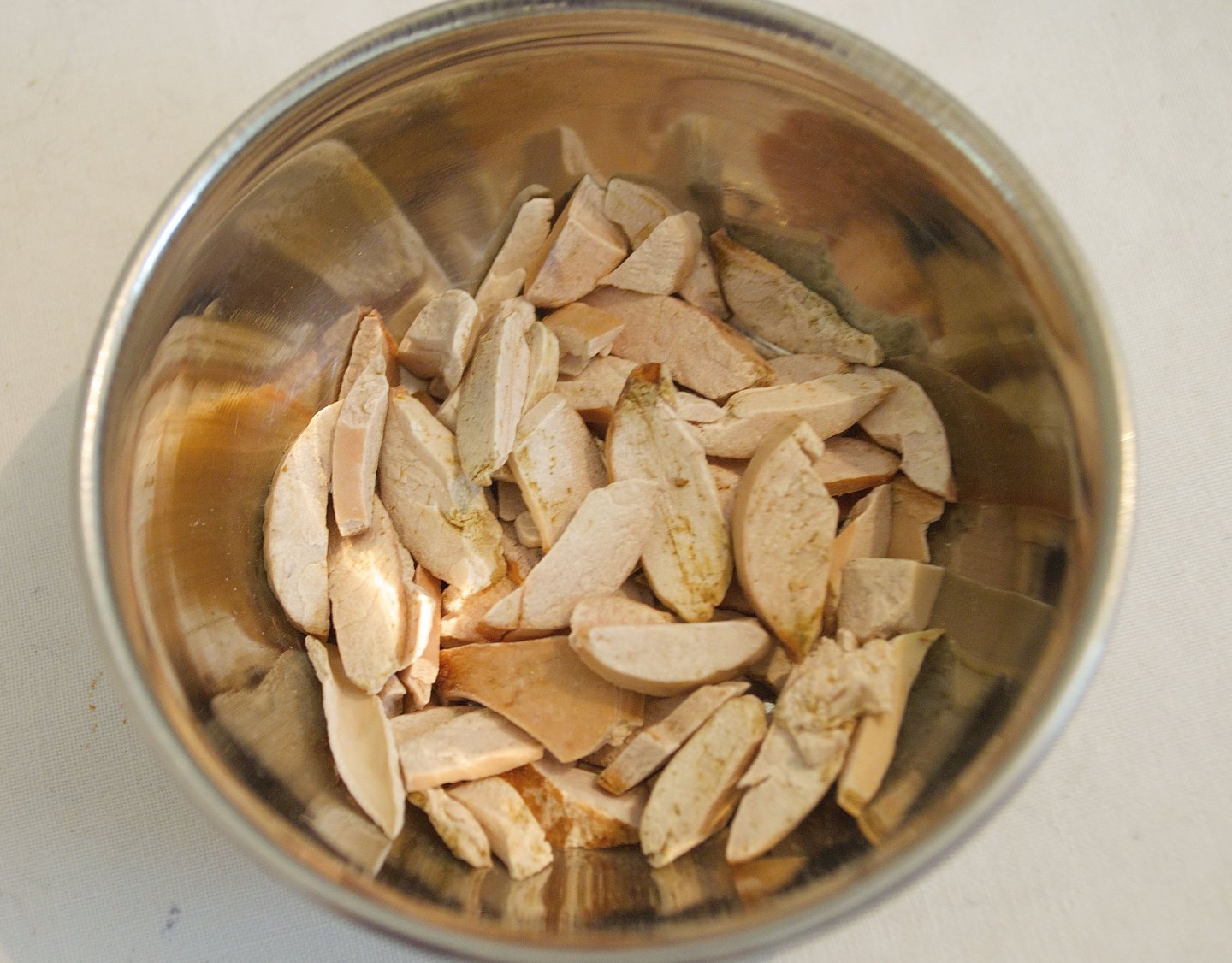
The inside kernel of mango pits
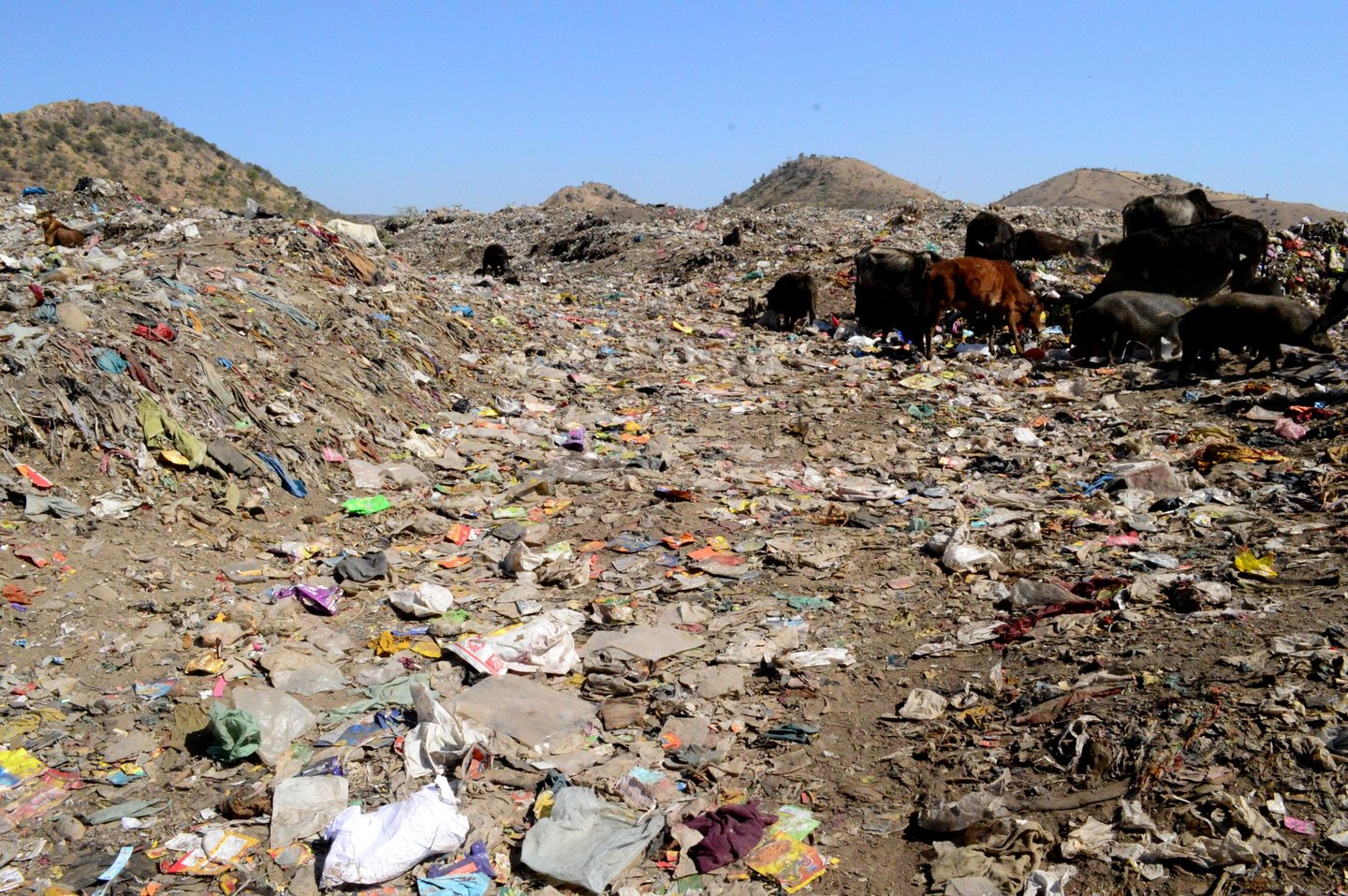
A landfill outside Udaipur city. A 2015 Planning Commission report (Task Force on Waste to Energy) says some 50 per cent of all waste that ends up in landfills is organic.
Today, many in Rajasthan and around India are reclaiming this process, calling it 'zero-waste food'. This fits well into 'zero waste' movements around the world that apply not only to food but to other spheres as well. These concepts aim at drastically reducing the waste we create, preserving resources better, and recycling, or using in full, the many ingredients that go into our actions and efforts.
In Rajasthan, where deserts and droughts have been a part of reality for decades, every resource is valued. Food was not always abundant. Rajasthani cuisines are famous for using various kinds of cactus and dried vegetables. Five items found mostly in the deserts go into the famous panchkuta dish: ker , a local berry; sangria, a bean; kumtia , a seed; gunda , a sticky fruit; and sukhi lal mirchi or dried red chilli. When green vegetables were hard to find in small villages, people got creative. With many urban areas of the state still closely tied to the rural communities, these traditions have managed to survive.
Vijaylakshmi knows dozens of recipes and sometimes uses the peel and the vegetable to make two different dishes in the same meal. Some family members might fancy different parts of the vegetable. Drying mango peels and pits is another custom that still survives today.
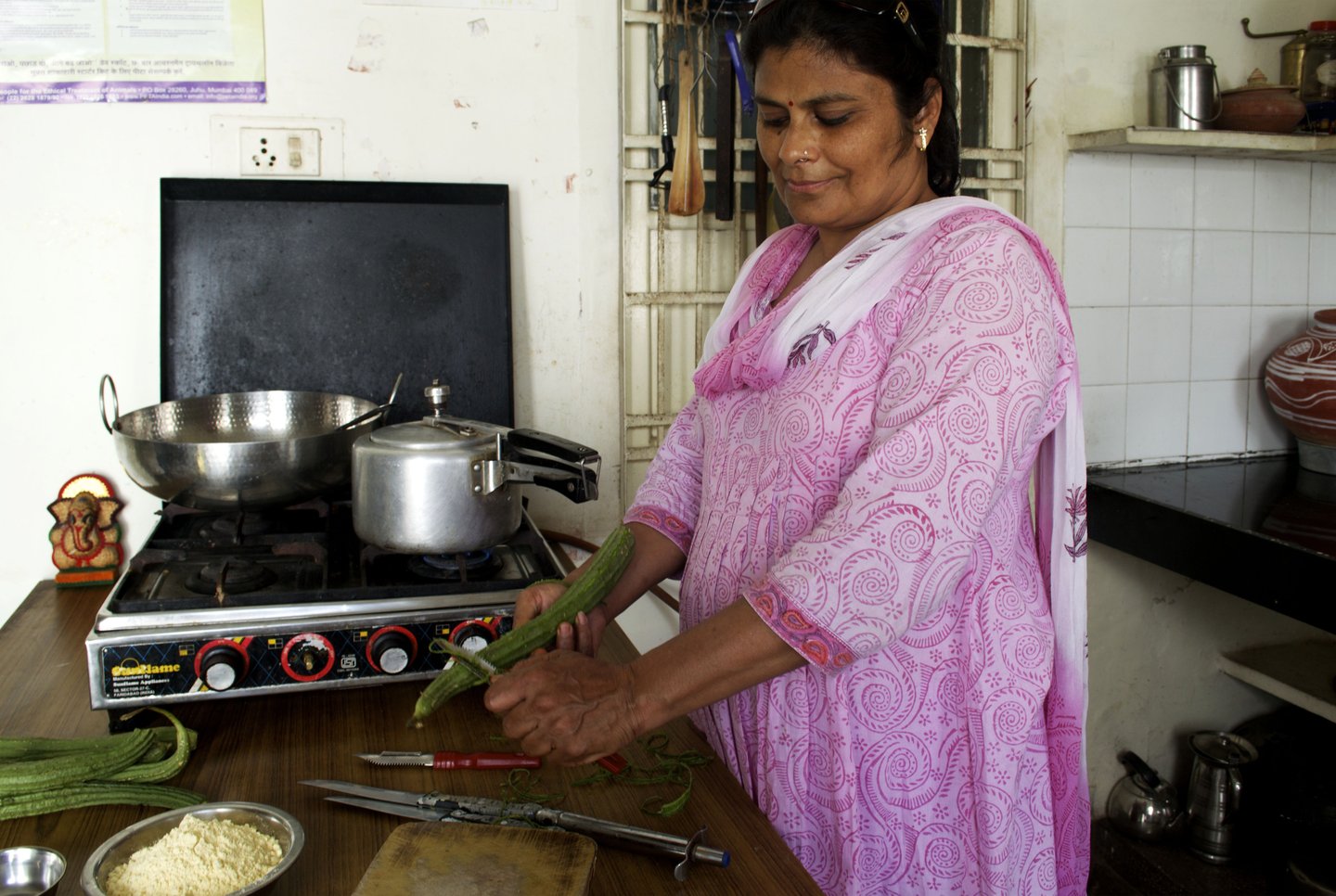
Vijaylakshmi Samar demonstrating the correct way to peel ridge gourd
Why does she continue to use peels in her cooking? “I learned it from my mother, aunts and grandmothers. I was less interested in cooking when I was younger, but now I like experimenting with many kinds of foods. My family enjoys the taste of different subzis. There are so many benefits to eating peels, from extra nutrients to fibre and iron.”
She prepares three different types of chhilke ki subzi (vegetable dishes from peels), using banana, mango and ridge gourd. Each recipe calls for a different treatment. She begins with dried mango peels. After softening them in a pressure cooker and mixing in mango-pickle masala to add flavour, she cooks them in a saucepan.
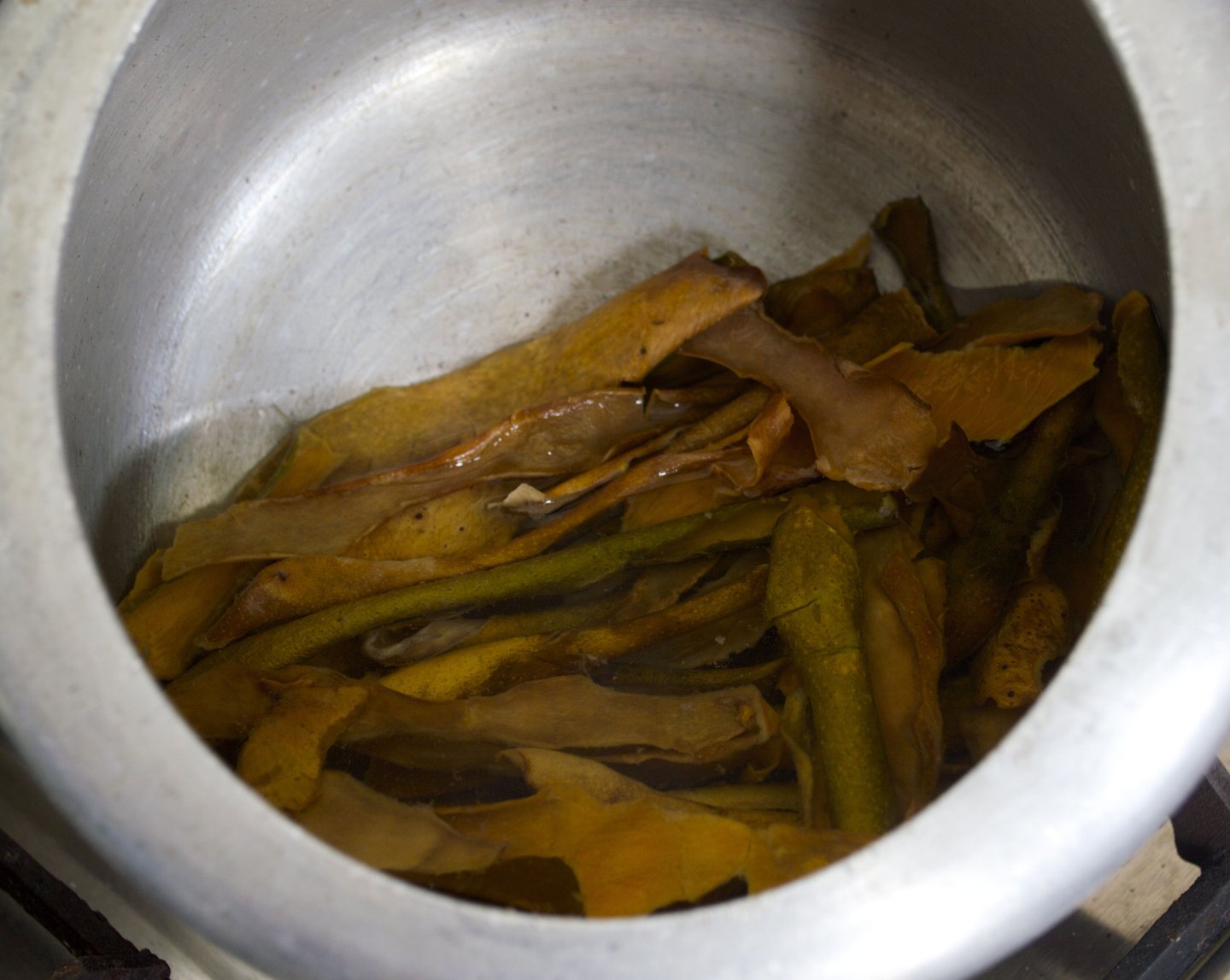
Softened mango peels after they’ve been steamed
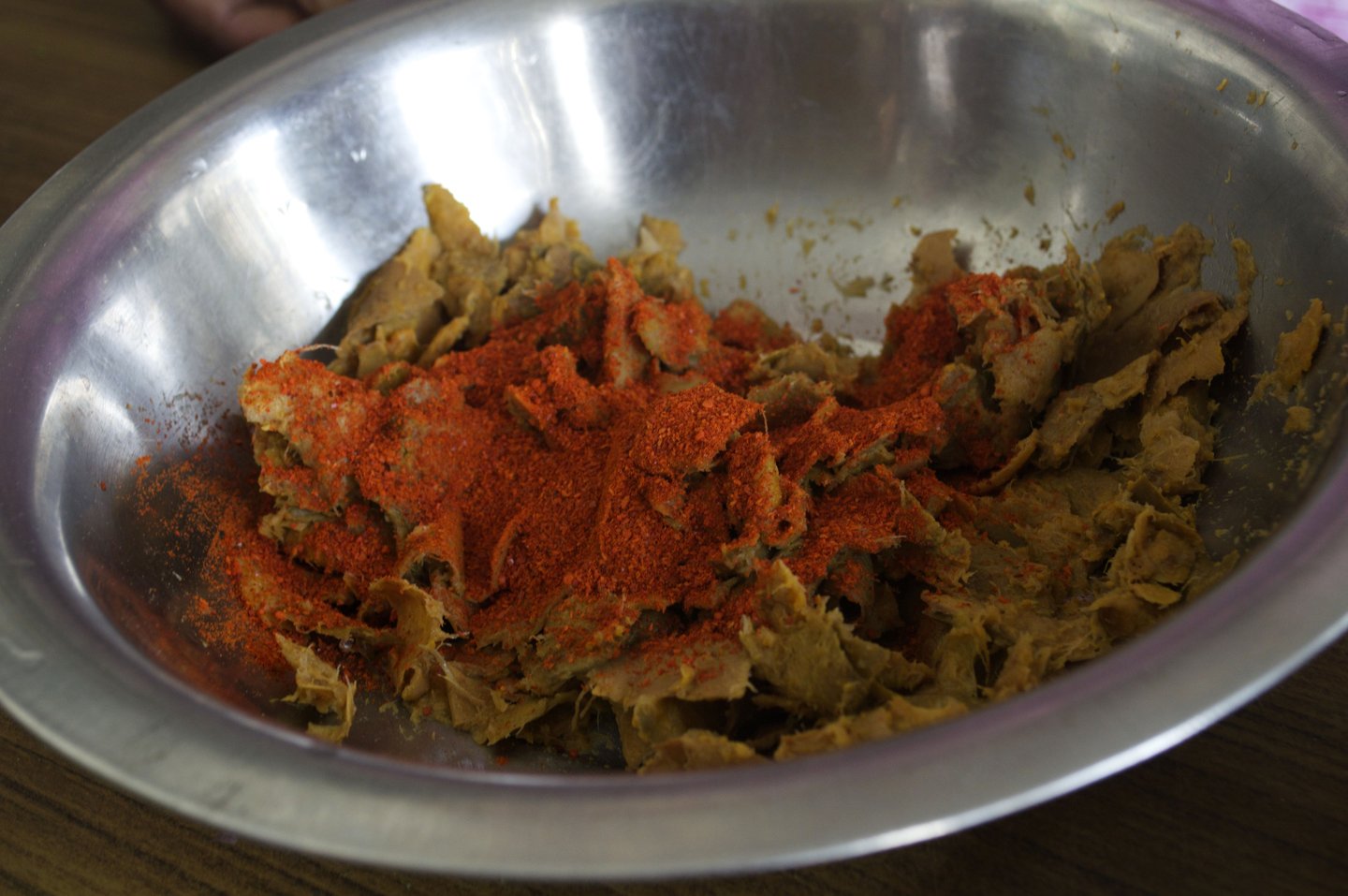
Spices give flavour to the mango peel
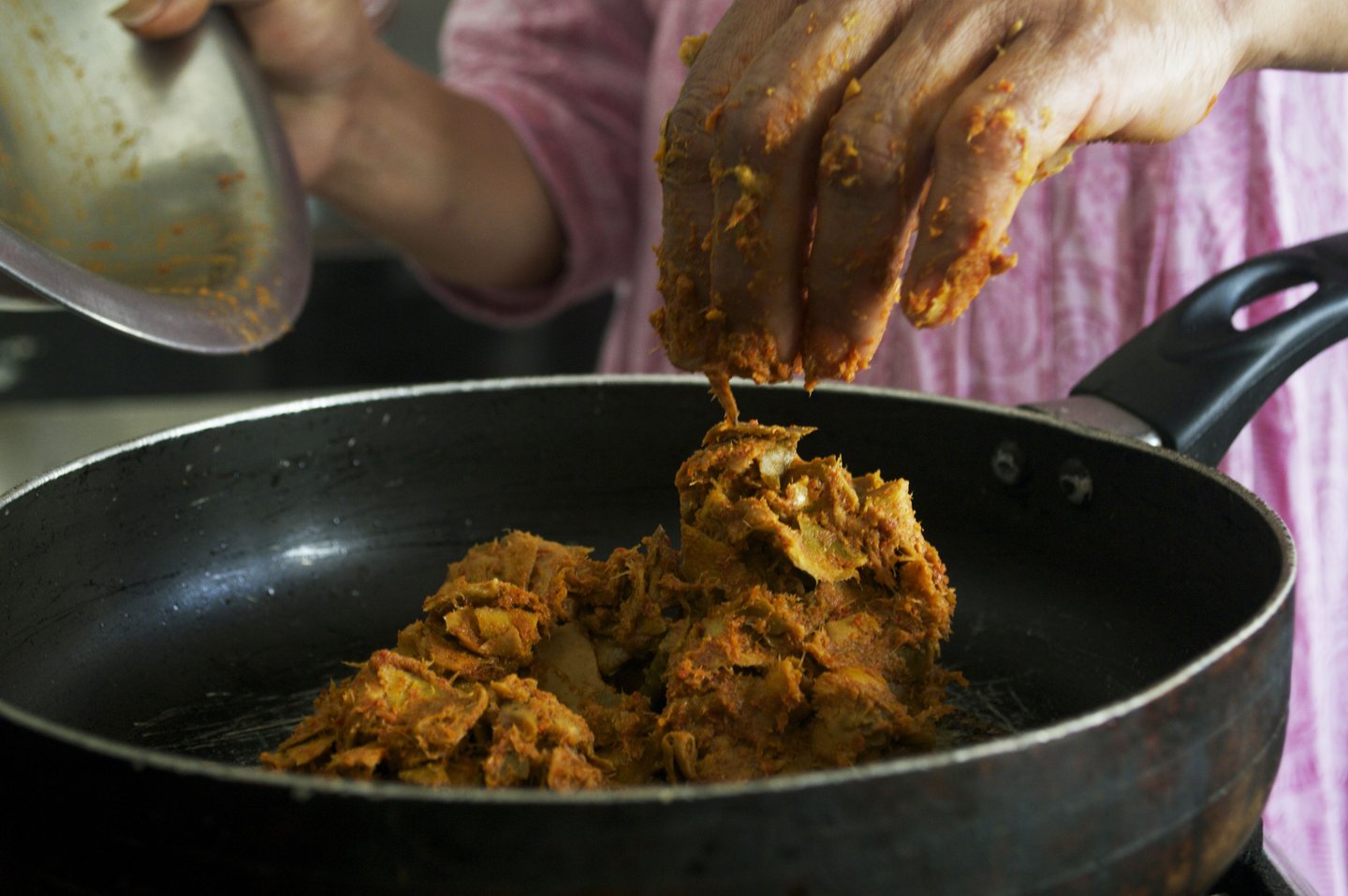
Mango peels being cooked in the saucepan
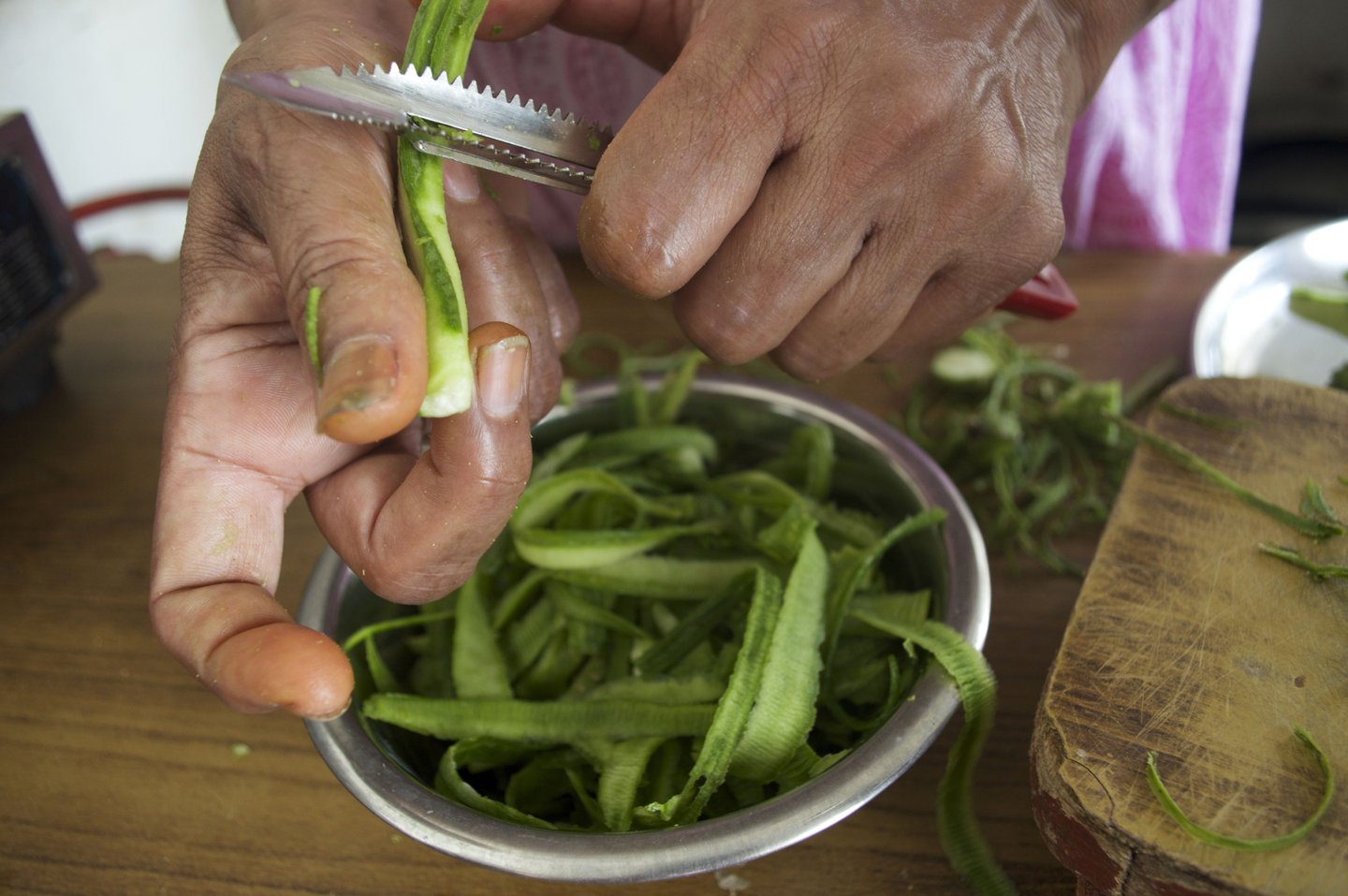
The ridge gourd peels are long and slim, absorbing flavours easily. For the turoi, or ridge gourd, she uses the vegetable and its peel separately to make two different dishes
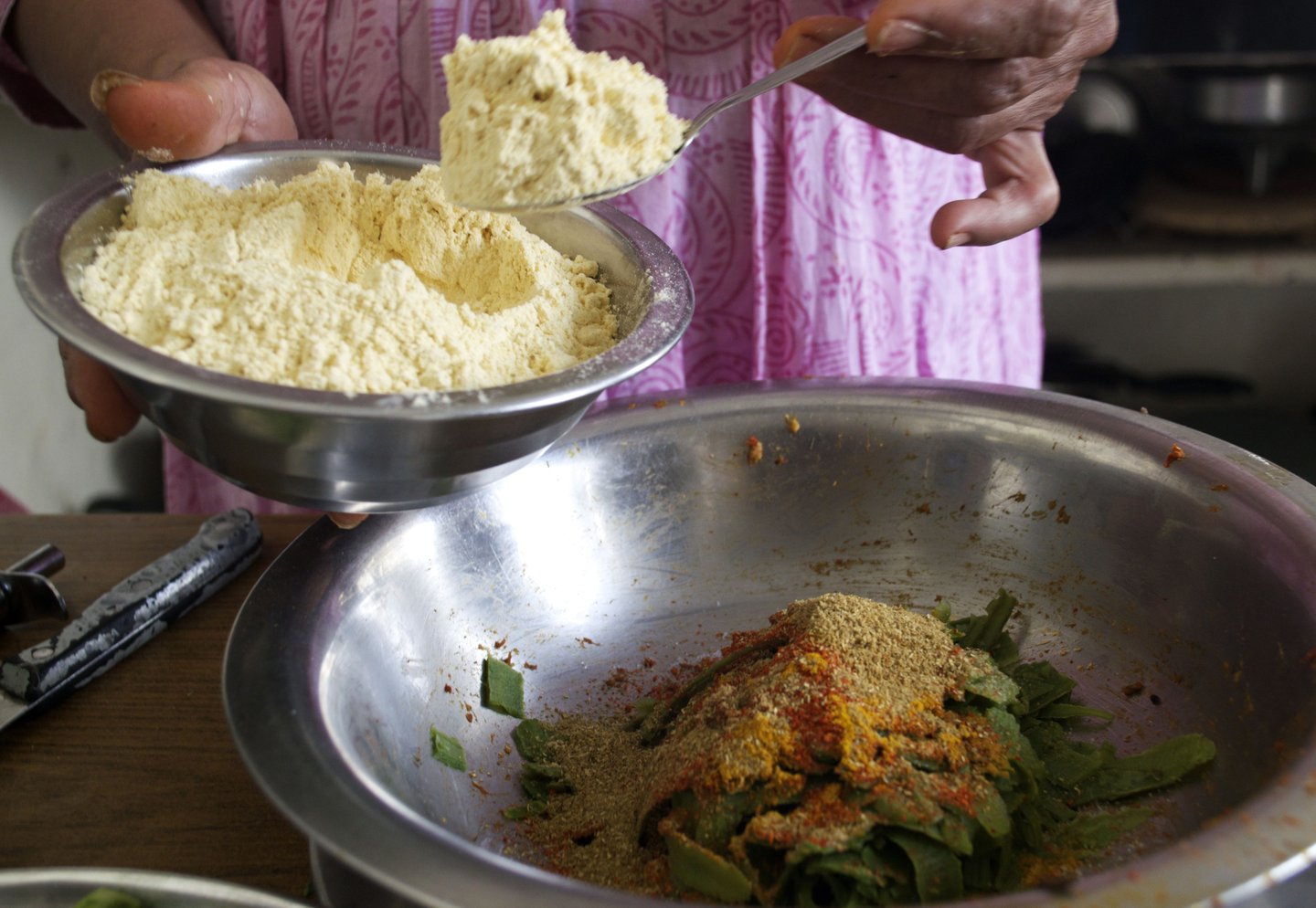
Vijaylakshmi adds besan or gram flour to the peels
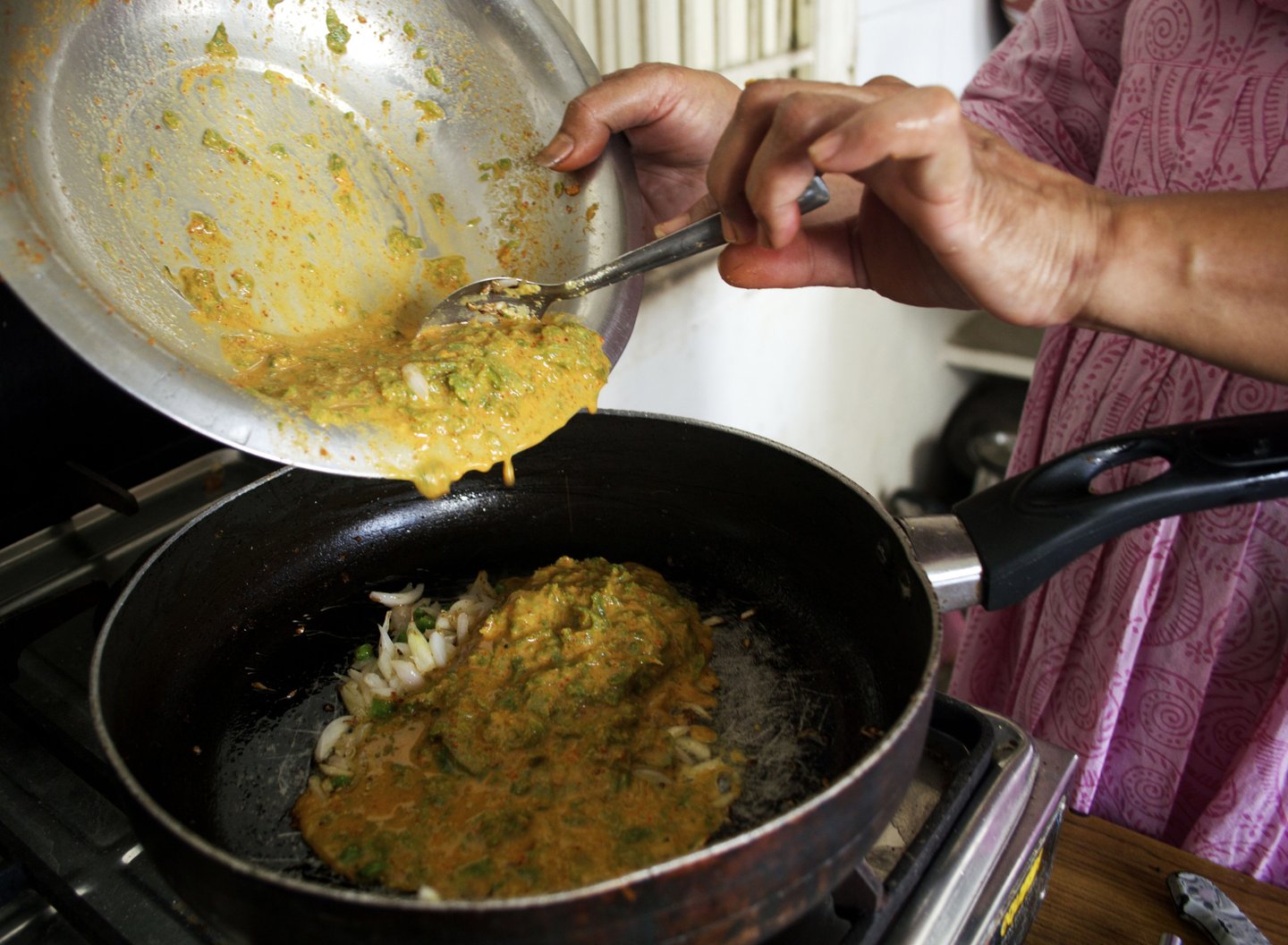
Adding a bit of water so everything sticks together, she cooks them in a saucepan. The ridge gourd peels are being slowly cooked
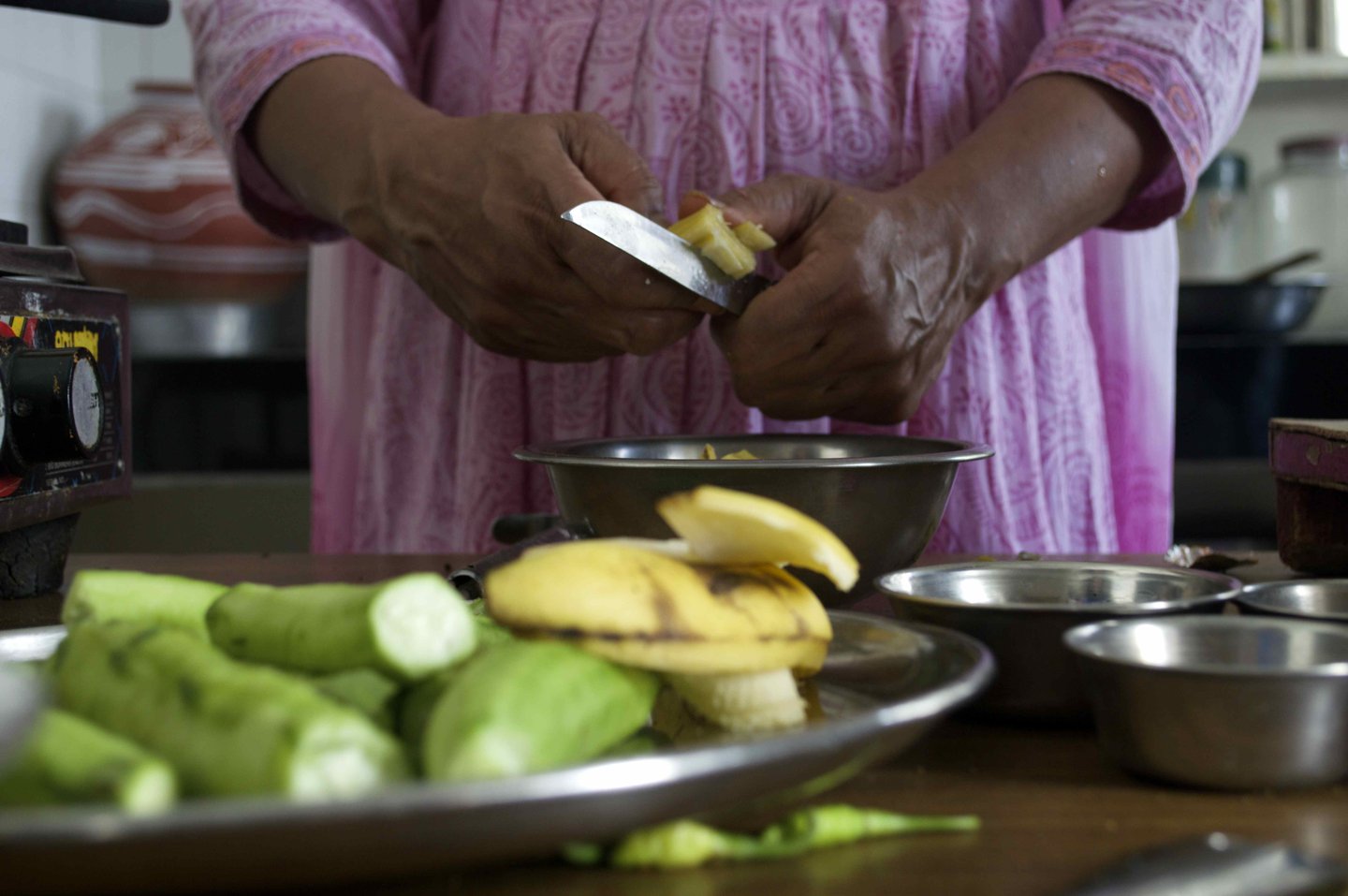
Most people don’t use yellow banana peels for their vegetable cooking. Vijaylakshmi does. 'It is a tradition in our household', she says, smiling. She adds spices, cooking them directly in the pan. Here the banana peels are cut into smaller pieces
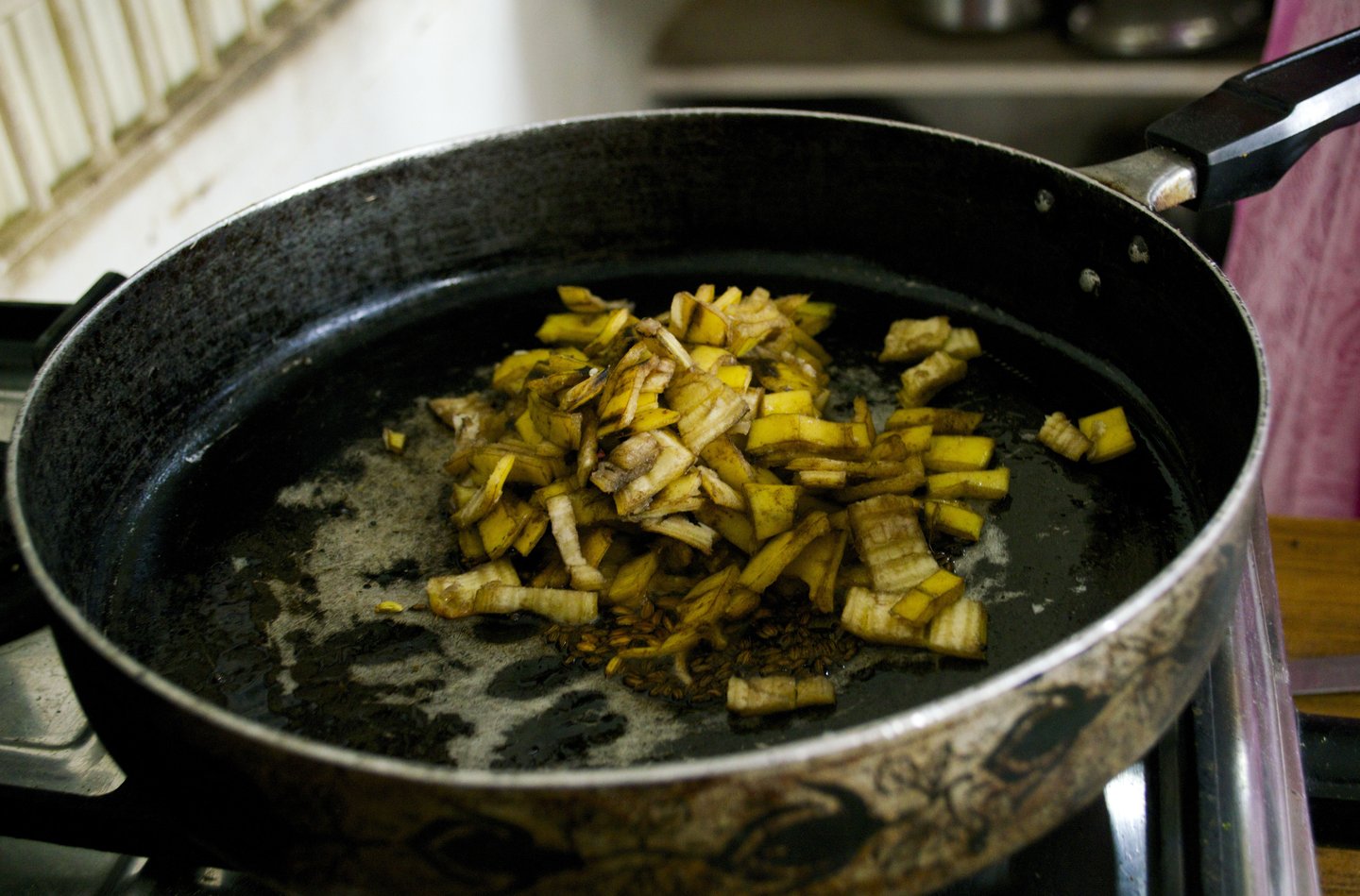
The banana peels require the least amount of preparation. They can be directly cooked with spices
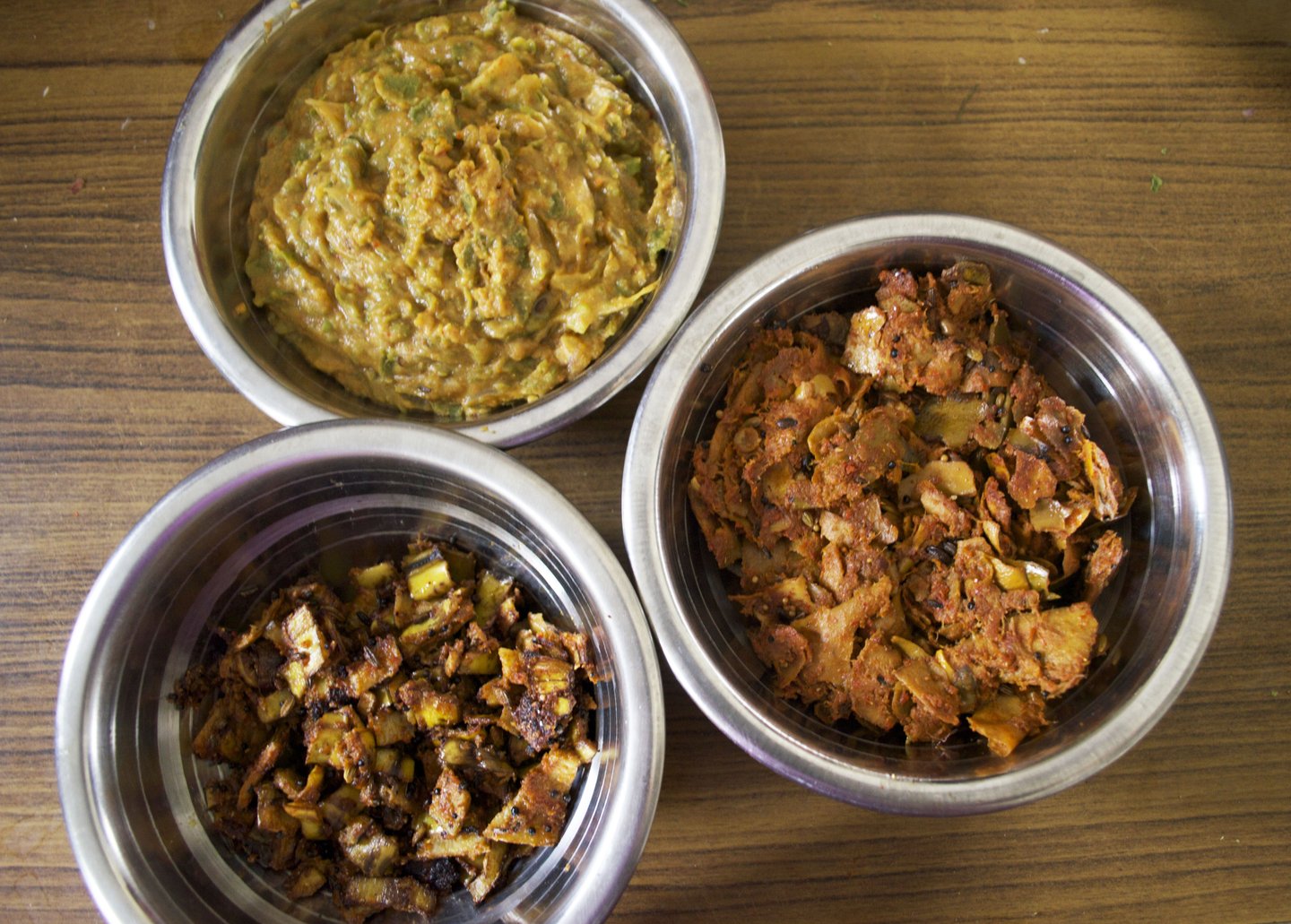
The finished dishes, from left to right: banana, mango and ridge gourd peels. What ends up before us is an exciting and colourful chaos of taste, texture and nutrition
Vidhi Jain, who is active in the ‘zero-waste’ and ‘slow food’ movements in Udaipur, says that today most people barely use the whole vegetable, much less the peel as well. Slow food movements around the world, originating in Italy, are a reaction to ‘fast food’ but go beyond that too. Slow food uses crops and ingredients that are geographically specific, or local and produced by processes that do not harm the soil or environment. For instance, organic or natural farming.
“I was taught by my grandmother,” she says, “and by my husband’s grandmother or
jia
, who used to live with us. It would frustrate me when jia would sit for hours, peeling the skins from each individual pea. I felt she was wasting time, but she was very aware of the resources in the house. Everything had a purpose. For her, it was also an opportunity to get the women in the house and the community together. Now my mother-in-law carries on certain zero-waste traditions; she makes watermelon rind
subzi
every year. She’s famous for it.”
Vidhi describes how many people use certain peels for healing purposes as well,
likekada
, a type of concentrated tea. She strips the peels of a pomegranate, dries them outside in the sun and then boils them in water. This concoction is known to be good for stomach problems. “I enjoy learning and cooking our traditional foods. It’s important to keep this knowledge alive.”

Vidhi Jain deseeds a pomegranate
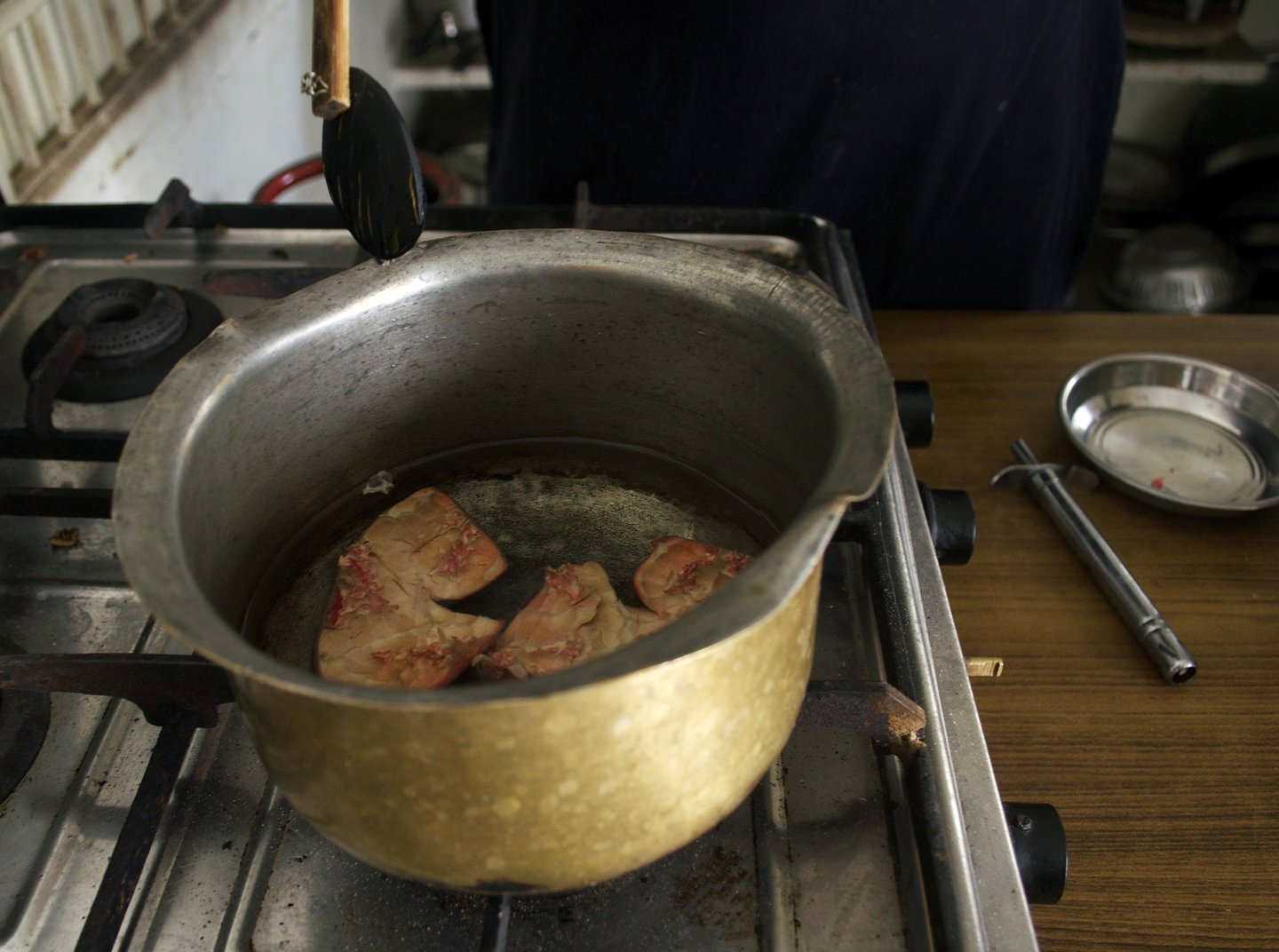
Lightly boiling pomegranate peels to make a medicinal tea
Prem Devi Dalal, who is in her 80s, also uses peels and seeds in her cooking. “Every grain of food was used when I was young,” she says. “Wasting wasn’t an option then. It was a matter of money – nothing was taken for granted.” For dinner this evening she is making karela or bitter gourd, using both the vegetable and the peel.
“Yes, this kind of cooking is more work, but for us it made sense,” Prem Devi says, simply. “We would go to each other’s homes when it was time to dry foods, or peel them. We valued people more because we didn’t have money. Most of the younger generation doesn’t want to put in the effort, but people forget that health comes from food. They have to remember that food is medicine; medicine is not food.”
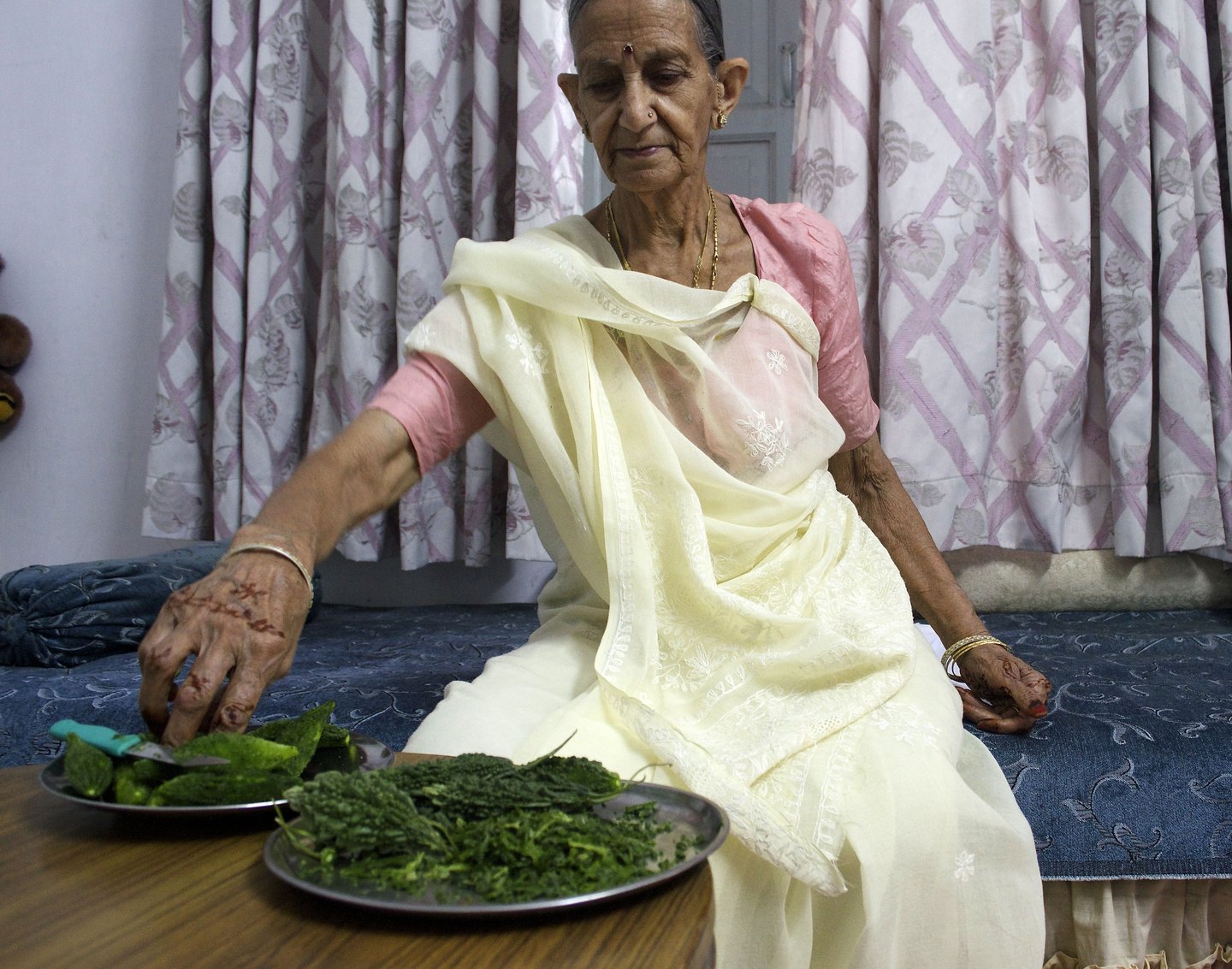
Prem Devi peels bitter gourd for her evening meal. People like Vijaylakshmi, Vidhi and Prem Devi leave you with the sense that returning to these traditional methods could help fight both hunger and waste
This article is part of the author's Media Fellowship on Good Food, Centre for Science and Environment, New Delhi.
